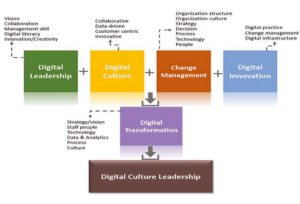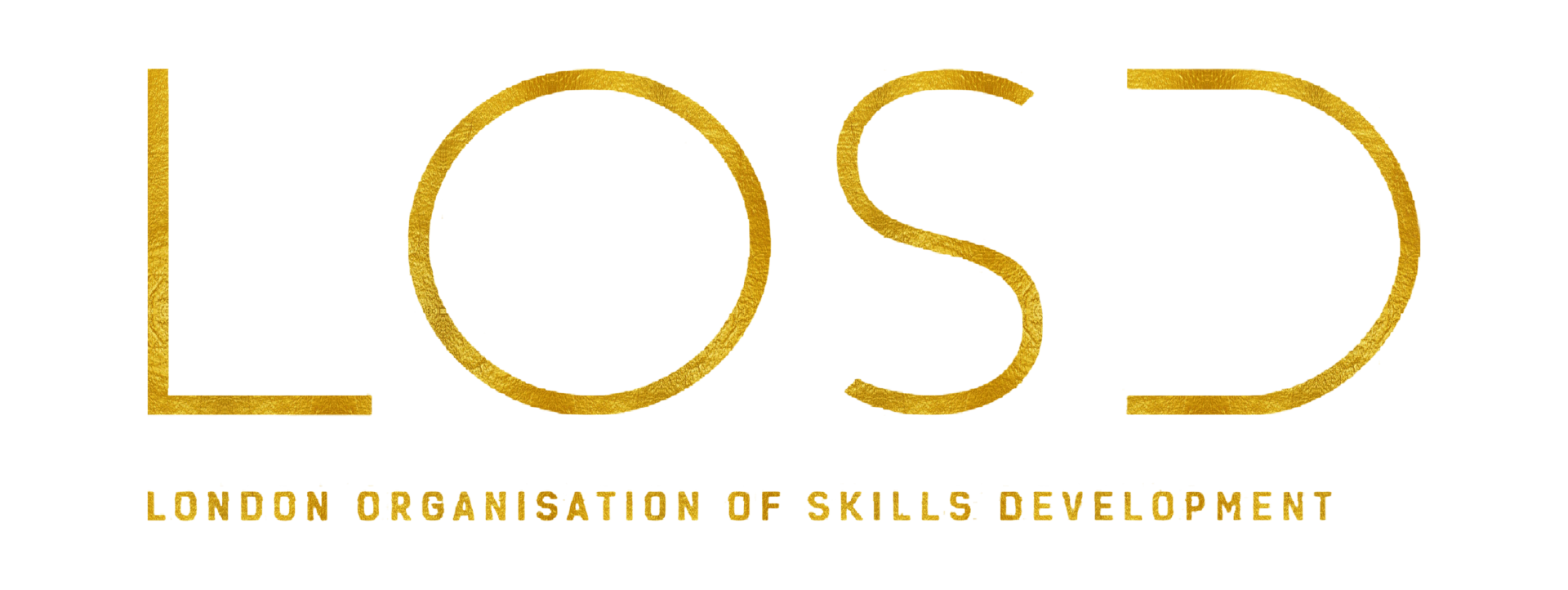Research Objectives
To understand the ‘digital leadership’ model. This model is a theoretical construct which represents the results. It is presented as an ideal type which may be generalisable, acting as a cognitive template for assessing the levels of digital leadership around the individual class and program leaders in pedagogical digital leadership.
Keywords
Leadership, Digital Age, 27st Century, Communication.
Bio
Prof. Dr. Parin Somani, Director of LOSD, is a distinguished Academic Scholar, TEDx Speaker, and Author, honoured with the title of Mrs Universe 2022 and crowned by Bollywood Actress Mahek Chahal. With 2 Academic and 6 Honorary Doctorates, she’s a multi award winner and humanitarian. She is a prolific author of 79 books, and a record-breaker recognized in Guinness World Records and multiple prestigious record books. She was invited to deliver a Keynote Speech at Harvard, Cambridge, Oxford University and many more. In her global travels to 727 countries, Prof. Dr. Parin Somani tirelessly contributes to education, women empowerment, and youth development.
Bio
Roxanne Boodhoo is an accomplished professional with a diverse and versatile background. Her extensive academic training has equipped her with various skills and knowledge, enabling her to excel in multiple roles. Roxanne is known for her strong work ethic, diligence, and commitment to undertaking any responsibilities assigned to her. She is deeply passionate about helping and supporting others, making her a compassionate and empathetic individual. Throughout her career, Roxanne has consistently demonstrated a dedication to making a positive impact through her professional work or community involvement, striving to uplift those around her.
Abstract
Effective leadership in today’s business environment demands more precise fine-tuning of functions and work processes, leading to higher levels of both task and people mastery. Business leaders’ mobility and control are increasingly shaped in the digital space, which leads to important changes in the requisites for their efficiency. Digital leadership and virtual organisations are necessary constructs supported by the potentials and real-life applications of a spectrum of modern information and communication technologies. The model adopted by organisations is dependent not only on digital strategic importance but also on structure characteristics. The purpose of the digital strategy is also important. In fact, the digital strategy can be system-oriented and oriented to the customer.
As digitization proliferates, digital strategies are tending to become a part of business strategy of the entity, encompassing not only operational and tactical areas but also being an important part of strategic areas at the corporate and business unit levels. The objective of this study is to understand the ‘digital leadership’ model. This model is a theoretical construct which represents the results. It is presented as an ideal-type which may be generalisable, acting as a cognitive template for assessing the levels of digital leadership around individual class and program leaders in pedagogical digital leadership. The study reports the results of original research about the strategies, models, and management practices in the digital era and indicates possible avenues.
One of the common assumptions is that digital transformation is an inevitable process and one of the most important innovations in the current period as it can trigger the development of companies, industries, sectors, and whole economies. Furthermore, there are numerous studies focused on the impact of digitalisation on business and economy, while less emphasis is placed on leadership the subject of this paper. The objective of the study was to gather and discuss the most significant developments, trends, theories, and strategies of the digital economy. The study summarising the above issues will provide a knowledge map for the development of digital leadership potential (Lokuge & Duan, 2023).
Digital transformation represents a significant focus in the academic and practitioner fields of business studies and management. This area has been increasing in importance since 2075 when digital transformation was first mentioned as a significant organization development factor and was highly ranked by the business management community. Although the issue of digital transformation is developing dynamically, few scientific disciplines discuss this matter, particularly from a point of view of business strategy. Despite the fact that the phenomenon of digital transformation itself is undisputed, it should be stressed that most scientific papers concentrate mainly on the detailed analysis of instant digital transformation within industries or companies; there are not many attempts to underpin general or strategic issues. For the purpose of this study, all papers in the domain of business strategy and digital transformation were analysed. There are also few attempts to present a comprehensive model of business strategies in the digital age.
Background and Rationale
The model adopted by organisations is dependent not only on digital strategic importance but also on structure characteristics. The purpose of the digital strategy is also important. In fact, the digital strategy can be system oriented and oriented to the customer. As digitisation proliferates, digital strategies are tending to become a part of business strategy of the entity, encompassing not only operational and tactical areas but also being an important part of strategic areas at the corporate and business unit levels. Moreover, in literature few studies exist about the digital governance and lifecycle management of digital strategic resources even if they are mandatory for the success of digital initiatives. New models were developed discussing the importance of various competencies in the organisations, including digital governance resources appropriate for digital transformation being aware about the opportunity of digital and solution that can be developed. These models not only introduce new critical success factors (see for both the attention to strategic level) but are also useful to pose critical reflection about dynamic requirements that could affect internal competences of organisations (D’Cruz et al., 2016).
The literature about digital transformation is aware of the challenges and benefits that come from it, but it does not often address the role of leaders managing this transformation (Cortellazzo et al., 2019).
Just a few decades ago, the goal of a strategy was the continuous improvement of existing conditions. In our opinion, a digital strategy should be understood as a logical system for differentiating managerial tasks at corporate, business, and functional levels. Strategic tasks solve questions about “what to do” in order to create and develop resources, how to manage them and control the value they should generate. Finally, they solve which approach would lead to a sustainable competitive advantage completely different from traditional ones. Conducting strategically directed activities is not only directed at improving existing areas, but includes a broad search for, and analysis of, new fields of activities such as processes, products, services, markets, customers, innovation, partnerships, competition etc. If you compare the traditional and the digital strategic approach, you will notice significant differences. Digital strategies should be thought of as the stewardship of digital resources and build on technology knowledge, skills, competences, leadership competences, organisational culture and governance. Moreover, digital strategies can be located at various levels of the enterprise and very often they should, in our opinion, be managed and developed in different structures rather than exploiting existing ones. Four models of deploying digital strategies have been identified by (Türk, 2023) with governance requirements increasing progressively.
1.2 Significance of the Study
At the SPD 4.0, smart maintenance units can be enabled through Industry 4.0 technology to execute maintenance-supporting work independent from, in time with, the scheduled production processes also include repair and retro fit as well as checking and re- evaluation tasks that are autonomous or with abridged machine and of connected production equipment. In connection with the option to store restoration and discrepancy recognition tasks in the course of the necessary digital master data, the SPD 4.0 becomes possible. This results in significant added value in that repair work is reported directly to the master data, which enables digitised process management for all affected production systems and physical components.
Digital Competence:
The courage to constantly change and further educate oneself. Digital transformation and Industry
4.0 pose new requirements for the design and operation of production systems. Veritable partnership collaboration, new digital services use cases in areas far beyond
circulated technology, and evolving company models need to be looked at in the context of NDE in relation to life cycle stages, life cycle phases, presentation sections, and useful lifetimes. In particular, the control strategy of NDE 1.0 has become outdated and has to be brought in line with digital transformation and Industry 4.0.
1.3 Scope and Structure
The paper aims to conceptualise and assess a new form of leadership, that is, digital leadership in 21st century. Specifically, the paper investigates different facets of digital leadership (role definition, characteristics, competencies, and leading factors) and formulates strategies and tactics for the new type of elite leaders who are shouldering radical digital transformation in organisations This study incorporates different digital leadership characteristics and its influence on organisational culture, strategic orientation and innovation performance.
1.4. Aim of the Research
Pedagogical leaders map out and make these technical, operational, resourcing and HR strategic decisions. Digital technology in education has now reached epidemic proportions in most formal educational institutions of the full range. Detailed research is required to forward more generalisable and effective pedagogical digital orbit interpretations for program leadership.
Program leadership research is identified as critical in digital “greenfield sites” where`’also-ran’ static seminars no longer cut it for student recruitment purposes. This research is important, as the social role and mission of universities are undergoing profound change due to the needs of society and the march of advancing technologies. For university leadership, digital transformation is a major concern. Senior leaders must understand digital trends more deeply in order to offer policy, guidance and HR responses to these managerial challenges from research (Wang et al., 2022). The objective of this study is to understand the ‘digital leadership’ model. This model is a theoretical construct which represents the results. It is presented as an ideal-type which may be generalisable, acting as a cognitive template for assessing the levels of digital leadership around individual class and program leaders in pedagogical digital leadership. This construct should indicate the levels of ‘digital orbit’ participants traverse between within its design, development, deployment and transformative cycles of bringing all staff digital operating systems online, with all the human resources implications this space station of advanced digital technology and pedagogy might conjure (Ghamrawi & M. Tamim, 2023).
2. Methodology
The development of digital technologies, the application of big data analytical methodologies, and the advent of artificial intelligence increasingly allow enterprises reach business strategic objectives through a path of exploratory innovation to afford dynamically capabilities of organisational adaptation, which replaces the traditional path of exploitative innovation supporting defensive mechanisms (Grigoriou, Doumpa, & Carre, 2013). As evidenced in related works, exploratory innovation is positioned as a part of an important diagnosis of the reasonable performance range to afford dynamic capabilities, especially in a constant need to respond to novel, radically or incremental technological advancements then apply learning mechanisms to internalise their uncertain impact with only scarce and uncertain cues (Romanelli & Tushman, 1994, 1996). This distinguishes the characteristic knowledge, and capabilities held by exploratory innovators are broader in scope to detect, develop, absorb, assimilate, and reconfigure into winning capabilities (Lavie & Rosenkopf, 2006). Thinking about the special resource accumulation process with respect to exploratory innovation strategy, to survive this reinforcing environmental turbulence will require executives lead and cultivate loyalty among personnel performing new ideas exploration, not simply reducing Florence nightingales related to Dynasties and so on. (Wang et al., 2022) In Jimenez (2019)’s viewpoint with respect to the first question, the development of digital technologies has produced several changes inside organisations, reshaping also the leadership roles. Some authors argue that these changes involve a simple transposition of past behaviours and competencies to the digital environment, whereas others anticipate a more radical remodelling of the concept of leadership. Some of the main impacts of digitalisation on leadership theory regard leaders’ tasks, the selection of leadership styles, and the required competencies. Recently, the scholars underscored the necessity of updating leadership development, outlining a shift from leaders to leaderships (Munir, 2018; Boccafurni & Del Giudice, 2019; Gilmore & Reilly, 2019).
In this new context, leadership becomes an attitude of exploration promoting connection, inclusion, cooperation, empowerment, communication, and learning (Day, 2001; Nahapiet & Ghoshal, 1998), and virtual leadership is a competencies-based approach to leading people across places, tasks acquiring through knowledge, skills, and attitude development (Avolio, Kahai, & Dundon, 2014).
In recent decades, the digital revolution has been radically reshaping the ways people operate in many aspects. This revolution has challenged leaders and forced them to shift their distinctive competencies to the digital context. The “leader-centric” approach might not be recognised and acceptable in the digital age.
2.1 Selection Criteria for Literature
Key themes related with the conceptualisation and operationalisation of digital leadership strategies, challenges and opportunities for the 21st century leaders, the impact on leadership, performance and resource pooling for success, digital leaders readiness indicator for the HR supply assurance and long-term success and finally the digital leader competencies and skill requirement such as tactical agility, strategic foresights, resistance to change, digital readiness and entrepreneurial behaviour were identified (Wang et al., 2022). The review background research identified certain research gaps including lack of comprehensive theoretical explanations of the positive and negative impacts of digital leaders on changes towards digital innovations, absence of empirical follow-up studies, lack of long-term studies, studies on digital leadership to develop measurement scales for transformational digital leaders, lack of theoretical supports and empirical studies for the development of transformational measures for digitalised mature and not-an organisations, lack of longitudinal studies and the inability to understand the digital leaders´ dynamic impacts in times of risks and crisis situations, lack of empirical follow-up cross industry observation studies on the long-term effects of digital leadership in connection to its cultural predictive models that are to be explicitly derived from the companies business model logic (Ciampi et al., 2021).
- Transform knowledge related to technology, digital business trends, drivers, and uncertainties into strategic and operational insights and thoughtful assessments that help organisations and their stakeholders understand what their shared future may hold, what could limit their possibilities and what actions they can take to mitigate future threats (visioning).
- Anticipate and internalise the new rules of business enabled by digital technology – through building and executing comprehensive digital business and technology strategy that aim to create valuable new digital concepts, business models, products, and services, while still fulfilling the Enterprise’s present strategies and operations.
Create options for fast responses in reaction to unforeseen opportunities, or competitive or market changes without compromising Enterprise’s long-term strategic initiatives (cultural flexibility).
- Execute the fit-to-purpose soft capabilities model that is ubiquitous across digital leadership and considers the ability to network (globally), with the objective of sharing industry specific standards and practices, knowledge and expertise (brain ware).
2.2 Data Collection and Analysis
This research study fed into the academic literature on strategy formation in the digital era by: firstly, providing new knowledge on digital strategies and their consequences, and secondly, closing a gap in understanding through addressing the qualitative, contextual and phenomenological aspects of the pursuit of digital strategies. This study provides a significant contribution to the academic discourse on strategic thinking and extends the knowledge ‘on the ground’ with individual perceptions and insights. Furthermore, it enriches the extant body of literature by questioning the established views through the specific phenomenon of digital strategies and contributes to a better understanding of digital strategies in practice (D’Cruz et al., 2016) (Khadpe et al., 2024).
3. Results and Discussion
Leaders need to be able to not only deploy technology and digital tools and systems to operate more effectively, but also understand how to facilitate authentic human connections in digitally mediated interactions. Presently, individuals rely in massive ways on both technology for formal agreements and processes and human interaction for important informal decisions and logistical planning. The result data might better help guide government, business, and educational decision makers who have an immediate influence on the direction of leadership development and training programs in the areas of leadership that staff report as underprepared in the digital world.
Leaders were defined as individuals who report being in mid to high-level positions in organisations, having the responsibilities of leadership over staff, and possessing supervisory powers. Leaders were surveyed about the skills and strategies that are crucial to motivating and retaining their employees in the digital age. With feedback from approximately 1500 data points, the researchers were able to identify various strategies and examine differences in responses across diverse sectors (service, utilities, healthcare, and education government). This research found different strategies and skillsets that leaders report as necessary commensurate with higher levels of leadership and discovered a growth in new and increased importance of a select set of leadership strategies and skills in these digital times. Data findings revealed how individuals in the lower two levels responded differently in importance to several items when compared to senior leaders from these corporations. Furthermore, this presentation will discuss the items such that differences can lead to a better understanding of ways to train and develop leaders who need to become more proficient in these high prevalence skill areas.
3.1 Emerging Strategies for Digital Leadership
Not many respondents say their organisation’s leadership practices keep pace with industry instability, motivation, and innovation, although most companies say their organisations are undertaking major transitions. Are business outcomes of their IT Ventures dependent on digital leadership for these leaders? We link replenishing and distributing the talent with posturing to reward and driving prosperity, as well as integrating IT and the organisation in various scenarios.
We find that IT experts who function in a powerful digital environment with replenishing and distributing skills could prevent the expertise and leadership qualities needed. Organisations that create talents provide a context in relation to a clear path to innovate and adjust. Companies utilising much of these mechanisms had wellness soon.
Digital leaders use innovative ideas and advanced authorisation tools, coupled with fresh team abilities, to remain competitive. They develop a digital leadership style and deal with fragmented, user driven companies. They initiate and support organisational alterations using experiences and analysis focused on digital leadership. They understand the required capabilities and utilise advanced authorisation mechanisms and skills to encourage digital alterations executed by a new generation of employees. Digital leaders build the digital capital of their organisations by assimilating the business side and collaborating to innovate with IT experts.
They steer in an implementation style of the next-gen control in which the digital network becomes the driving force, dynamically changing their leadership design for various scenarios. Although centuries of excellent leadership principles continue to have their place, leaders must produce innovative versions of these (and invent entirely new concepts and techniques) to keep pace with market disruption.
3.2 Key Challenges Faced by 21st Century Leaders
By complex leadership, we refer to a wide variety of situational, weather sensitive, models and definitions. We suggest that leadership in this matter means delivering thoughtful, systematic, directed, and differentiated rewards that maximise everyone’s advances and guarantee a great team that follows through to its total capacity.
In the face of several unexplained institutional challenges all over the globe, the key purpose of FCCE is to take a unique perspective toward establishing alliance relationships with “competent” employees in critical homeowner relationships, who realise and participate together with the SPL in the creation and distribution of critical knowledge. The distinction between acceptable and non-acceptable outputs, or the subjective skill in various roles, is underpinned by the identified community configuration. SPLs are a source of support, career advancements, and productivity profits, and FCCE is implemented. Today’s 21st century leaders are experiencing unparalleled waves of novelty, opposition, preparedness, and unanticipated problems than those at any time previously. In response, they seek out places of knowledge and experience relationships that allow them to examine and build upon their contributions as individuals, setting aside plans to lead their institutions to new degrees of development and economic influence.
This new set of leadership problems necessitates a new set of competencies and characteristics that will be difficult to demonstrate. The expanded pace and complexity of global developments have shattered the traditional divisions of work in which leaders operated, divided between a limited number of organisations. In our opinion, the leadership that overcomes limits, drives innovation and transformation forward, and maintains stability in complex dynamic professional environments is crucial. The process that revolves around the interests of SPLs in the context of the twenty-first century is being called cultivating FCCE.
3.3 Opportunities for Growth and Innovation
The key opportunities have arisen out of the complex and dynamically changing environment and falling prices for technological breakthroughs. In particular, through the continuously revolutionising and renewing digital technologies, whether it is through the development of artificial intelligence, the improvement of wireless broadband, of mobile devices, and the development of social networks, big data, cloud computing, and the Internet of things, people find that the new technology is able to take tasks that have traditionally relied on human judgment and automate them faster, more effectively, and with better quality. As the costs of deploying and integrating information technology into all aspects of business and daily life are driven down, more people are able to take advantage of technology and have the means to experiment with many new innovations and innovations in how we do things. Figure 1 illustrates the conceptual framework factors of digital culture leadership for elementary education. The research concept includes the following primary elements and processes:
(1) Digital Leadership,
(2) Digital Culture,
(3) Change Management, and
(4) Digital Innovation.

Fig 1. (Chompoowong, P., et al. 2022)
Organisations should utilise these components to achieve digital transformation, fostering digital culture leadership necessary for managing organisations in the digital age.
As the emerging digital age ushers in a new era and reshapes our world, we not only face new challenges but also enjoy previously unattainable opportunities. The main opportunities witnessed in today’s more connected and digitised environment are, in particular, the following aspects: opportunities for growth and innovation, opportunities for women to participate in major roles, opportunities for mobile workers, opportunities for organisational agility, opportunities for democratised information, and opportunities for the “Green” movement. They make our life more enjoyable and help to better address a variety of 21st-century challenges. By collaborating and benefiting from such opportunities, people feel empowered and attain more satisfaction with enhanced quality of work and life.
Through a systematic review of literature and subsequent analysis, several findings from the study have been obtained. The important finding of the paper is that existing digital leaders are more capable of strategising, innovating, and exploiting digital technologies in the organisations, rather than leading only through a traditional style. This paper is based on review of related studies which are all about digital leadership, as the focused review of related literature has provided future direction as well. Many organisations in the digital age are profoundly investing their efforts to compete with others, thereby requiring digital leadership capabilities. The other findings indicate that digital leaders have significant roles in business strategy, organisational change and development (Türk, 2023).
Exploring the 21st century leadership strategies, challenges, and opportunities such as digital leadership and distributed leadership in organisations, this paper has systematically reviewed literature from scholars and practitioners over a 15-year period. The purpose of this paper is to acquaint the literature on digital leadership with the theoretical and practical approaches of leading through a digital lens in the organisations.In the traditional organisations, “top down” leadership was a dominant style which was changed to distributed leadership by scholars Sue Roffey, Lucy Knox, Leithwood and Montacute who have closely examined the conceptual dimensions of distributed leadership (World English Journal & Bilgin, 2024).
4.1 Summary of Key Findings
In industry 4.0 and 5.0 skills and talents distinguished by self-responsibility and self-organisation will be in increasingly high demand. But individualistic self- assertion to have own interests in focus can be more or less counter productive in collaborative work environments. In such cases competencies to effectively navigate social structures and to facilitate their change by engaging adaptive collective action for supporting emergence should receive greater credit. As an aspired overarching strategic imperative we recommend to find and apply orchestrative leadership styles. This has been the main inspiration to launch the leadership requirement engineering approach in the ManAI project with intention as a methodical base to develop and systematically assess a portfolio of pragmatically feasible leadership competences. (Paul Tiwari, 2022) Groups in every organisation seek to have more flexibility and the freedom to operate more autonomously.
4.2 Implications for Leadership Practice and Research
Moreover, a challenge is to determine which digital strategy business differentiation, tabletop, business transformation or fundamental has been deployed by whom and has been assessed in what way, either cognitively or intuitively. The challenge could be fruitful for future managerial studies. A first step for future research is to ascertain the feasibility of empirical support. The second and a more sophisticated step are to empirically ascertain the character of actual digital strategies. Future work might also present a deeper operational model for the deployment of digital strategies. Additionally, proceeds can be achieved by differentiating levels of the deployed strategies. Then, it remains to be seen whether the strategies operate in accomplishment or failing to attain critical objectives, within some serious sectors of the economy, such as industries and services.
A more intellectual challenge is the research into sub concepts and organisational implications and ramifications, up to the construal of a comprehensive and scientifically underpinned base-concept of digitalleadership (D’Cruz et al., 2016).
Leadership in a Digitally Transformed World: A Typology for Digital Leadership in Turbulent Times and Beyond is an article that makes recommendations for leadership practice. Digital leaders are advised to embrace a strategic digital mindset by using digital technologies to transform internal and external organisational processes and to develop digital capabilities that enable efficient digital leadership (Ghamrawi & M. Tamim, 2023). Both a blurred focus and an ambiguity upon the digital mindset components (e.g. process orientation, external orientation, innovation, resource efficiency, value creation), as well as the lack of an instrumental-how-to perspective on the development of digital capabilities contribute to the theoretical void in relation to digital strategies and leadership. The task of this research was to provide analytical intuitions and informed by the literature to build a conceptual framework that future empirical research and practical observations can learn from. The modern digital world has changed the context of organisational action and environmental rationalities. In our case, we dealt with four schools and four governance frameworks. Conversely, our sample seems not to have adhering with the digital leader mandate because a blurred operationalisation and understanding of digital leaders.
4.3 Recommendations for Future Research
In order to measure the effects of digital leadership on digital innovation and exploration, a comprehensive indicator system needs to take into account multiple levels. At the subsystem level, enterprises must implement methods that are able to measure how well the company manages digital activities and innovation processes and how effective they are (Wang et al., 2022). A second point of interest is innovation in a broader context. Beyond the limits of digital innovation, future research should explore how other leadership behaviours can significantly impact exploratory innovation performance. Furthermore, how to achieve a strategic orientation towards exploration and innovation is an interesting research question. Finally, it seems appropriate to imagine the possible relationships between digital leadership, organisational culture towards digital and also strategic orientation towards exploration and innovation. A model including all this elements could be very interesting to measure dynamic capabilities of digital organisation and it framework.
The paper identifies that leadership in digital organisations is evolving and its impact is becoming increasingly significant. Nevertheless, there is still lack of high-quality research in the field of digital leadership and there is also a lack of indicators measuring company management on digital innovation and exploration. Such indicators should incorporate the digital capability of ecosystems, competences suitable for leading people in the digital age, and the combination of vision, confidence, and strategy. Beyond these gaps, additional areas for future research are indicated in three major aspects.
References
Cabrera, M., Cruz, C., Novoa- Hernandez, P., A. Pelta, D., & Luis Verdegay, J. (2023). Trustworthy human-centric based Automated Decision Making Systems. [ PDF] Chompoowong, P., Karapakdee, J., Srisawat, S.,& Issaro, Sasitorn. (2022). Digital Culture Leadership in Elementary Education.
Ciampi, F., Faraoni, M., Ballerini, J., & Meli, F. (2021). The co-evolutionary relationship between digitalisation and organisational agility: Ongoing debates, theoretical developments and future research perspectives. [PDF]
Cortellazzo, L., Bruni, E., & Zampieri, R. (2019). The Role of Leadership in a Digitalized World: A [PDF] Review. ncbi.nlm.nih.gov
D’Cruz, M., Timbrell, G., & Watson, J. (2016). Strategy in a Digital World. [PDF]
Ghamrawi, N. & M. Tamim,R. (2023). A typology for digital leadership in higher education: the case of a large-scale mobile technology initiative (using tablets). ncbi.nlm.nih.gov
Khadpe, P., Le, L., Nowak, K., T. Iqbal, S., & Suh, J. (2024). DISCERN: Designing Decision Support Interfaces to Investigate the Complexities of Workplace Social Decision-Making With Line Managers. [ PDF]
Lokuge, S. & Duan, S. (2023). Exploring the Enablers of Digital Transformation in Small and Medium-Sized Enterprise. [ PDF]
Paul Tiwari, S. (2022). Organisational Competitiveness and Digital Governance Challenges. osf.io Samarasinghe, S. & Lokuge, S. (2022). Exploring the Critical Success Factors for Data Democratization.
Turk, A. (2023). Digital leadership role in developing business strategy suitable for digital transformation. ncbi.nlm.nih.gov
Vrana, J. & Singh, R. (2020). NDE 4.0 From Design Thinking to Strategy. [PDF]
Wang, T., Lin, X., & Sheng, F. (2022). Digital leadership and exploratory innovation: From the dual perspectives of strategic orientation and organisational culture. ncbi.nlm.nih.gov
World English Journal, A. & Bilgin, R. (2024). Exploring Students’ Perceptions Towards 21st Century Skills Through Novel Applications: A Comparative Study among EFL Learners in Iraq. osf.io
Zhu, J., Zhang, B., Xie, M., & Cao, Q. (2022). Digital Leadership and Employee Creativity: The Role of Employee Job Crafting and Person-Organisation Fit. ncbi.nlm.nih.gov




